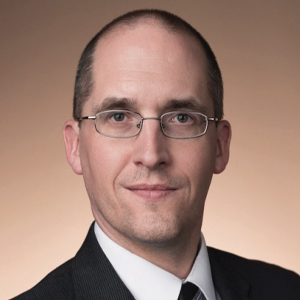Well-being in the workplace
The authors pass one another in the lab.
Nathan: “How ya doing?”
Dan: “Fine, thanks.”
Are we, though? When someone asks us how we are doing, we might think about our health and, sometimes, our wellness. But how often do we give an honest reply about our well-being?
Diagnosing our work culture
Until recently, when we discussed health and wellness, we were referring to our physical (and, more recently, mental) state of being and the conscious choices we made to live a healthy lifestyle. For example, health assessments primarily looked for the absence of disease symptoms; fever, cough, rash, edema or pain implied poor health.
Thanks to a new understanding of how the brain and stress hormones affect organ systems, we now know that physical health can influence mental health and that chronic mental and emotional stress can lead to disease. This understanding that health and wellness extend into our emotional and social health has given new meaning to the term well-being — a contentedness where physical, mental, emotional and social health coalesce.
Academia is beginning to pay serious attention to mental health. In part, this attention follows a 2018 Nature Biotechnology paper in which graduate students reported moderate to severe symptoms of anxiety (41% of respondents) and depression (39%). And mental health disorders are not limited to students: A 2006 study found that 20% of faculty at several medical schools had significant levels of depression. Such studies show that a variety of personal, professional, situational and environmental factors — including work–life balance issues — play a role in the development of these and other disorders.
Underrepresented and marginalized populations disproportionately bear interpersonal, professional and social/environmental stressors, making individuals in these groups particularly vulnerable to low well-being and consequent educational attrition. For example, female and transgender graduate students had the highest rate of anxiety and depression in the 2018 Nature Biotechnology study, and another 2018 study found that women of color leave science, technology, engineering and mathematics studies in higher education due to an unwelcoming environment that can include social isolation and microaggressions. Other studies point to child-rearing — disproportionately the work of women — as a major cause of attrition from STEM fields.
Institutional stressors and social structures in our disciplines and professional cultures lead to low well-being, which in turn disproportionately drives individuals from marginalized populations out of the upper echelons of STEM fields, perpetuating a work culture that is largely white, male and cisgender. This is more than undesirable: It is unethical. It robs marginalized individuals of opportunity and perpetuates inequity.
A call to action
Employees are making demands for policies that promote well-being, which can boost workplace productivity and attract talent. Millennials now expect jobs that permit well-being. A recent study found that attrition from the STEM pipeline beyond the bachelor’s level frequently reflects a mismatch between work objectives, personal values and social identity. To recruit the best talent and to construct a diverse workforce, the STEM community must understand and invest in well-being.
Well-being is not just good for the individual: It is also good for the productivity of an organization. So how can we establish well-being in our STEM work environment? An internet search will turn up myriad articles written by people sharing their work–life balance strategies. These are insufficient to cure a culture of poor well-being. First, most of these fortunate souls already have made it to the upper echelons of their professions. What about strategies for people who are at risk of leaving STEM due to an oppressive culture of low well-being? Second, these writers suggest that it is an individual’s responsibility to find well-being in a potentially toxic work culture rather than the responsibility of the collective to establish a culture that supports the well-being of individuals and, in turn, the organization.

We in the STEM community — and particularly in academia — have an image problem when it comes to well-being. Our flexible work schedules, which we rightfully claim as a blessing, also can be a curse: Fluid schedules make it difficult to keep track of work hours, which is doubly problematic when our salaries are the same whether we work 40 or 80 hours in a week. STEM researchers report feeling pressured to work far more than a 40-hour week, such that admitting to a 40-hour full-time job sounds like a guilty confession. As evidence, a 2013 study found that more than one-quarter of all papers sent to the journal Biological Conservation were submitted on weekends or on weekdays between 7 p.m. and 7 a.m.
Bragging about how much we work and judging others’ commitment to science by their work hours only exacerbates a lack of well-being. We need to change this culture. Some first steps:
- Don’t perpetuate the culture by joining labs and institutions whose culture and policies promote poor well-being; you can find supportive mentors doing excellent work in other places.
- Don’t just be an example of someone who successfully has managed a work–life balance; explicitly tell your trainees and employees that they do not have to sacrifice their families to start a career or vice versa.
- Seek opportunities to empathize. Rather than dismiss the lamentations of your co-workers and trainees, listen to their appeals for ways to balance their obligations as a STEM professional with their personal needs.
- Better still, assume the roles played by your trainees and co-workers so you can develop empathy for their competing needs. For example, fathers who take on child rearing report reduced productivity and professional mobility, just like the STEM researcher mothers who do a disproportionate share of child rearing. When we understand our peers’ need for well-being, we can find better solutions for both the individual and the organization.
Institutions now offer health and wellness programs, but these are insufficient and ineffective. This low return on investment, some say, is the result of these programs’ inattention to the health of the whole person, their well-being. Rather than incentivize short-term fitness goals, we must build capacity for mental, emotional and social health within our institutional structures.
A meeting theme
In this spirit, we are developing a thematic track at the 2020 American Society for Biochemistry and Molecular Biology annual meeting that questions who we are and what we do. The first session — “Who we are” — challenges us to consider how we can better foster a culture of well-being. Voices from academia, industry and government ask: How do we prevent and overcome harassment in our STEM environments? What contributes to equity and retention of underrepresented students in STEM? How can we be better mentors to support the well-being, particularly the mental well-being, of our trainees? The second session — “What we do” — questions how we can go about dismantling institutional barriers that otherwise stymie equity and access. First, we ask how evidence-based practices can be used to make our classrooms a place where everyone can achieve their full potential. Then, two speakers challenge us to rethink the traditional delivery of curricula by demonstrating how stories can be used to elicit STEM content. In creating these sessions, we hope attendees will leave their preconceptions and traditions at the door. Instead, we want participants to reimagine how we teach by asking ourselves, “Whom do we bring along, and whom do we leave behind?”
Together, we hope we can develop a stronger culture of well-being within the STEM workforce, one in which mindfulness about equity and inclusivity removes the barriers that impede people in underrepresented groups from realizing their full potential. We invite you to share and learn with us as we build a more inclusive culture that moves beyond health and wellness and instead uses well-being as the benchmark.
Enjoy reading ASBMB Today?
Become a member to receive the print edition four times a year and the digital edition monthly.
Learn moreFeatured jobs
from the ASBMB career center
Get the latest from ASBMB Today
Enter your email address, and we’ll send you a weekly email with recent articles, interviews and more.
Latest in Careers
Careers highlights or most popular articles

Designing life’s building blocks with AI
Tanja Kortemme, a professor at the University of California, San Francisco, will discuss her research using computational biology to engineer proteins at the 2026 ASBMB Annual Meeting.

Upcoming opportunities
#ASBMB26 late-breaking abstract submission opens on December 8. Register by Jan. 15 to get the early rate on our Annual Meeting.

Make your abstract stand out
Ensure your research is impossible to overlook. Get quick, practical reminders for crafting an abstract that attracts readers and helps you build connections at the conference.

Inside industry postdocs
As more Ph.D. scientists look beyond academia, industry postdocs offer a new kind of training, where mentorship meets mission-driven research. Fellows at Pfizer and Genentech share how these programs prepare them to translate discovery into impact.

Upcoming opportunities
The Lipid Research Division Seminar Series returns Oct. 15 with talks on recent advances in triglyceride cycling in adipocytes.

Writing with AI turns chaos into clarity
Associate professor shares how generative AI, used as a creative whiteboard, helps scientists refine ideas, structure complexity and sharpen clarity — transforming the messy process of discovery into compelling science writing.


